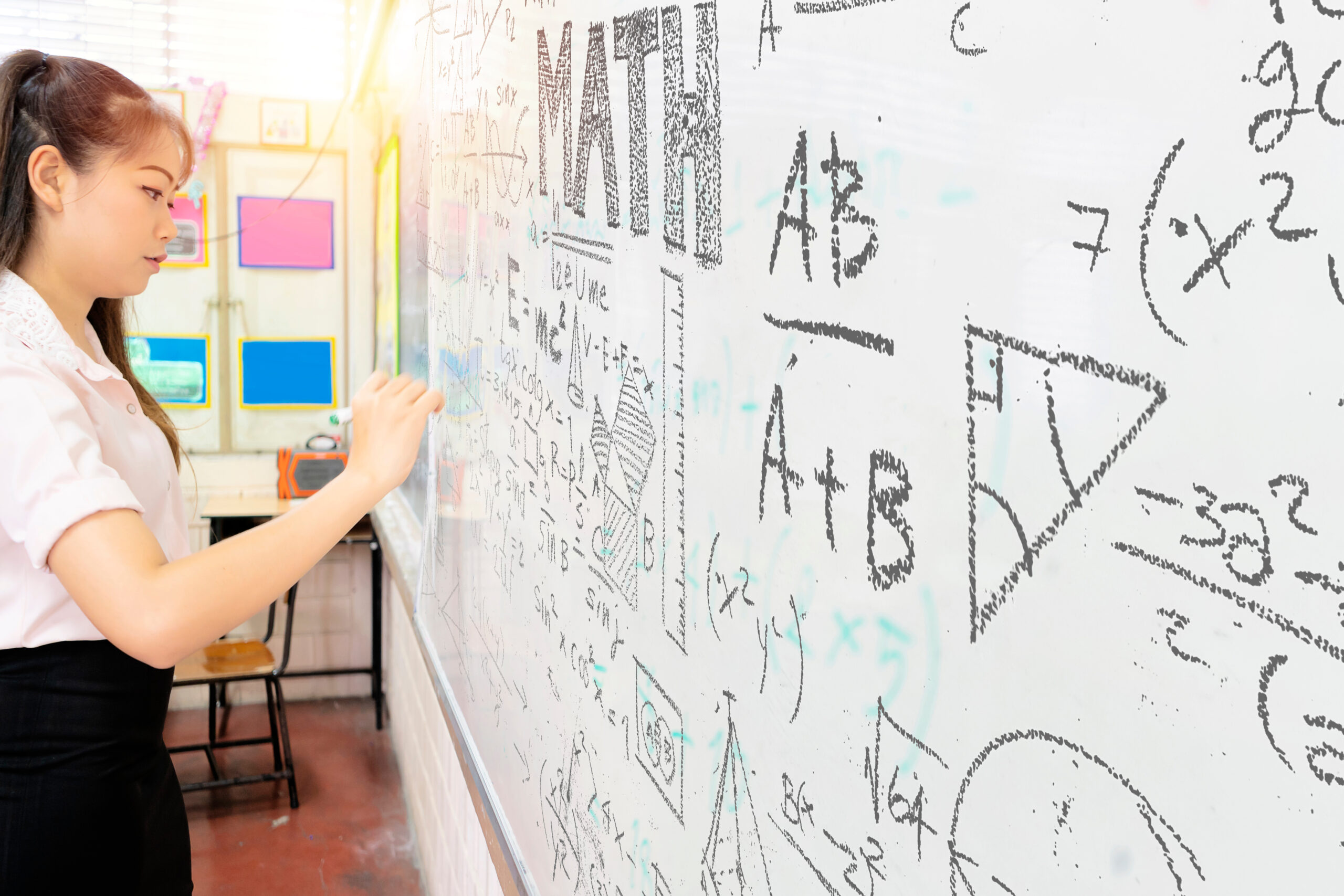Share this article.
For too long, judgments about what constitutes “good” math instruction have been based on false dichotomies. Learning is either student centered or teacher directed, and its goal is either conceptual understanding or procedural fluency. Both of these either/or propositions vastly oversimplify the complexity of what our brains need to know and to do to engage in mathematical thought. (Larson and Kanold, 2016) The key to bringing these propositions together is through metacognition. Teaching students how mathematicians think about mathematics is the missing piece.
As teachers we know that metacognition is a word that gets thrown around a lot, where it is often touted the power behind deeper and more meaningful learning. While this is true in theory, in practice the concept is often vague and less than useful. “Thinking about thinking” is not exactly an easy strategy to implement in the classroom. But because it’s not easy doesn’t mean we can dismiss it. Recent research has shown that students who were taught metacognitive strategies made an average of eight months more progress than students who were not. And that was over the course of just one year. (Emeny, 2013) It’s clear from this data that metacognition is important, but what is it really, and how can it be taught?
Metacognition and Student Ownership
Metacognition requires students to examine, externalize, and apply their thinking, “such as:
- What it means to learn something,
- Awareness of one’s strengths and weaknesses with specific skills or in a given learning context,
- Planning what’s required to accomplish a specific learning goal or activity,
- Identifying and correcting errors, and
- Preparing ahead for learning processes.” (Chick, 2017)
Metacognition is related to the concept of student ownership—a mindset that leads to elevated academic achievement and that teachers can actively develop in themselves and in their students. Students who own their learning are not thinking on a superficial level. They can state what they are learning and why, can explain how they learn best, can articulate when they are learning and when they are struggling, and understand their role in any academic setting. This is one type of “thinking about thinking” that leads to greater academic success.
Supporting Metacognition in the Math Classroom
 Support for metacognition in the math classroom often looks like either a lot of teacher-led modeling and thinking out loud or giving students loads of problems to solve in the hope that they will somehow discover the most useful approaches and strategies on their own.
Support for metacognition in the math classroom often looks like either a lot of teacher-led modeling and thinking out loud or giving students loads of problems to solve in the hope that they will somehow discover the most useful approaches and strategies on their own.
Most teachers will tell you that in practice, neither of these approaches works very well. And they really don’t work for students who are already struggling. For many students, it’s better to “show them the [metacognitive] toolkit and teach them how to use it one tool at a time…teaching one’s brain to control the thought processes it has for the purpose of directing it towards the management of their own learning.” (Emeny, 2013)
Fostering metacognition requires a balance of explicit instruction, teacher modeling, student-centered exploration, and responsive coaching that helps students first learn the kinds of questions and thought processes they can apply, and then grow to use them on their own. These metacognitive skills come naturally to some students but not to others. Teachers must play an active role in teaching them and helping students own their mathematical learning.
That’s why we provided you with a metacognitive study of each of the mathematical practices—what this thinking looks like at each grade level, a step-by-step approach to teaching each practice, and a reflection guide to support students as they “think about their thinking.” Take a look at our specific support for each of the 8 Standards for Mathematical Practice so you can support your students’ mathematical metacognition.
- Make Sense of Problems and Persevere in Solving Them
- Reason Abstractly and Quantitatively
- Construct Viable Arguments and Critique the Reasoning of Others
- Model with Mathematics
- Use Appropriate Tools Strategically
- Attend to Precision
- Look for and Make Use of Structure
- Look for and Express Regularity in Repeated Reasoning
Continue the Learning
Check out these articles and resources to continue your learning about this topic…
The Learning Brief
In this article you learned…
- Teaching kids the skill of mathematical metacognition is the key to achieving conceptual understanding and procedural fluency.
- Metacognition requires students to examine, externalize, and apply their thinking and is related to the concept of student ownership—a mindset that leads to elevated academic achievement.
- Fostering metacognition requires a balance of explicit instruction, teacher modeling, student-centered exploration, and responsive coaching that helps students first learn the kinds of questions and thought processes they can apply, and then grow to use them on their own.
Can you imagine building an environment full of motivated, engaged, and eager students who own their learning?
We can.

